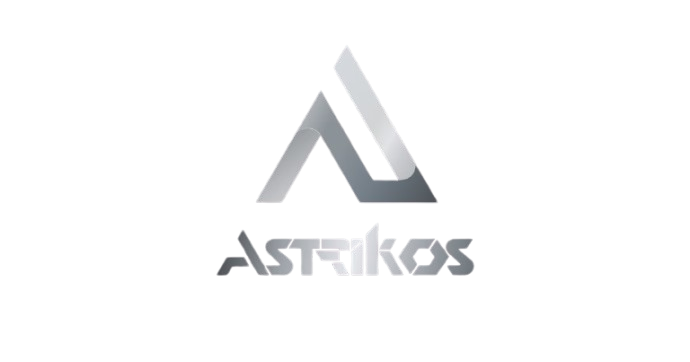The manufacturing world is undergoing a historic shift—from automated to hyper-automated. In this transformation, the convergence of Artificial Intelligence (AI) and the Internet of Things (IoT) is playing a defining role. Machines are no longer just automated—they’re intelligent, self-optimizing, and capable of making real-time decisions. This new frontier is called hyper-automation, and it’s rapidly redefining how factories operate.
What is Hyper-Automation?
Hyper-automation goes beyond traditional automation. It is the strategic integration of advanced technologies like AI, IoT, machine learning, robotic process automation (RPA), and analytics to automate not only routine tasks but also complex, decision-based processes.
Unlike standard automation, which typically targets repetitive, rule-based tasks, hyper-automation enables end-to-end digitization—combining people, processes, and technologies in a unified, intelligent ecosystem.
The AI and IoT Power Duo
To understand hyper-automation in manufacturing, we must first explore the roles of AI and IoT:
IoT: The Digital Nervous System
IoT (Internet of Things) connects machines, devices, and systems via embedded sensors. These smart devices generate real-time data—everything from machine temperature and vibration to energy usage and inventory levels.
AI: The Digital Brain
AI takes the massive volume of IoT-generated data and turns it into actionable insights. Using algorithms, pattern recognition, and predictive analytics, AI powers decision-making, forecasting, and autonomous responses across the production line.
Together, AI + IoT = Intelligent Automation at Scale.
How AI and IoT Drive Hyper-Automation in Manufacturing
- Predictive and Prescriptive Maintenance
Gone are the days of reactive maintenance. With IoT sensors monitoring equipment 24/7 and AI analyzing the patterns, manufacturers can detect anomalies and predict failures before they happen.
Example: A compressor shows abnormal vibration. AI forecasts failure within 72 hours. The system autonomously triggers a maintenance alert and reschedules production to minimize disruption.
- Smart Supply Chain Management
AI algorithms assess data from IoT-enabled inventory trackers, supplier systems, and logistics platforms to optimize procurement, stock levels, and delivery routes in real time.
Impact: Reduced lead times, minimized stockouts, and agile response to supply chain disruptions.
- Automated Quality Control
Cameras and sensors inspect products on the assembly line. AI evaluates this data for defects faster and more accurately than human inspectors, ensuring consistently high quality.
Result: Real-time defect detection, root cause analysis, and automated corrective actions.
- Dynamic Production Scheduling
AI considers real-time IoT data—machine availability, resource constraints, and order urgency—to constantly adjust production schedules.
Benefit: Maximum throughput, less idle time, and just-in-time delivery.
- Energy Efficiency and Sustainability
IoT monitors energy consumption across equipment. AI identifies inefficient patterns and suggests optimizations.
Example: AI adjusts HVAC or motor usage based on production schedules, reducing energy costs and carbon footprint.
Real-World Case: Smart Factory in Action
A European automotive manufacturer integrated IoT sensors across its factory floor and deployed AI for analytics. Within 12 months:
- Machine downtime dropped by 40%
- Maintenance costs reduced by 25%
- Production throughput improved by 18%
- Carbon emissions dropped due to optimized energy use
This isn’t a future vision—it’s the present reality of hyper-automation.
Benefits of Hyper-Automation
- End-to-End Operational Visibility
From machines to supply chains, everything is monitored and controlled in real time. - Increased Agility
Respond to market changes, customer demands, or supply disruptions instantly. - Reduced Operational Costs
AI-driven optimization cuts waste, rework, and energy expenses. - Enhanced Decision-Making
Data-driven insights lead to better strategic and tactical decisions. - Scalability
Once built, hyper-automated systems can scale quickly across new lines or locations.
Challenges and Considerations
While hyper-automation offers immense benefits, it also requires careful planning:
- Data Integration: Legacy systems must be upgraded or integrated with IoT platforms.
- Security: Connected devices increase vulnerability—cybersecurity must be robust.
- Skilled Workforce: Teams need training in AI, IoT, data science, and digital operations.
- Change Management: Cultural resistance to automation can slow adoption without proper communication.
Steps to Begin the Journey
- Assess Automation Readiness: Evaluate current systems, data infrastructure, and business goals.
- Start Small: Begin with a high-impact process or department (e.g., maintenance or quality control).
- Choose the Right Technologies: Select scalable AI and IoT platforms that align with your long-term vision.
- Build a Cross-Functional Team: Involve IT, operations, engineering, and data specialists.
- Scale Strategically: Use lessons from pilot projects to expand automation across the enterprise.
Conclusion
Hyper-automation isn’t just about making machines smarter—it’s about making manufacturing smarter, faster, and more resilient. By combining the real-time sensing power of IoT with the analytical intelligence of AI, manufacturers can create fully digital, self-optimizing operations.
In a world where speed, adaptability, and precision define success, AI and IoT aren’t optional—they’re essential. Manufacturers that embrace this wave of hyper-automation will lead to the future. The rest will catch up.

